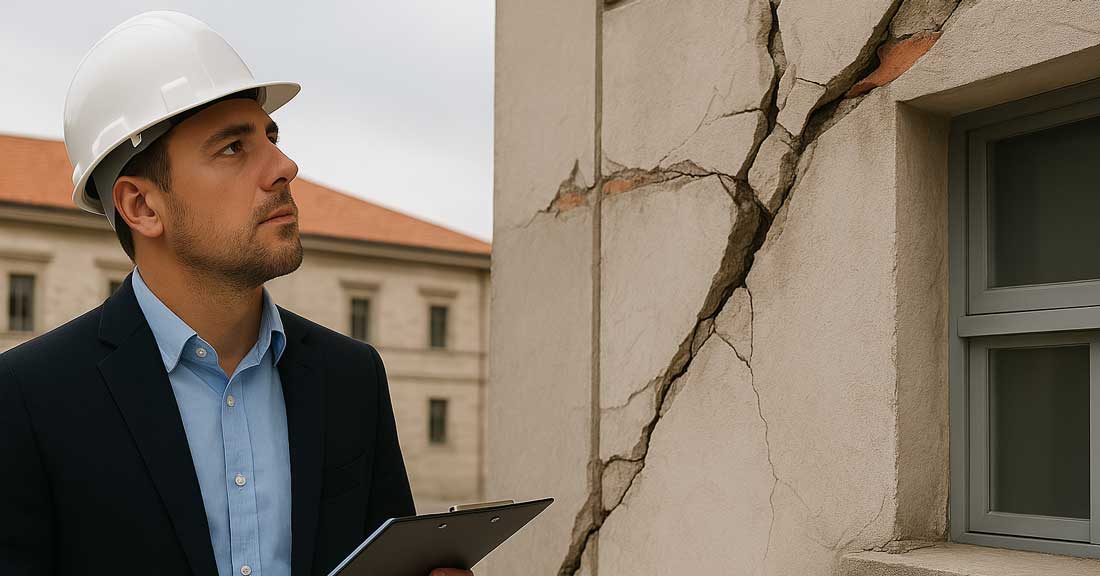L’Italia è un Paese caratterizzato da una elevata pericolosità sismica a causa della sua particolare conformazione geologica e tettonica. Eventi come il terremoto di Amatrice del 2016 e, in passato, quelli dell’Aquila nel 2009, dell’Irpinia nel 1980 e del Friuli nel 1976, hanno evidenziato quanto sia cruciale proteggere le comunità e le infrastrutture dall’energia distruttiva dei fenomeni sismici. L’Ingegneria Sismica, in questo contesto, svolge una funzione determinante per garantire la sicurezza degli edifici, ridurre i danni causati dai terremoti e, soprattutto, salvaguardare vite umane.
Cos’è l’Ingegneria Sismica?
L’Ingegneria Sismica è una branca dell’ingegneria civile che studia il comportamento delle strutture durante i terremoti e di conseguenza tecniche e tecnologie per ridurre l’impatto dei terremoti sull’edificato, con l’obiettivo di progettare costruzioni sicure e resilienti.
L’ingegneria sismica opera ad ampio spettro su tutte le tipologie strutturali a disposizione al fine di valutarne le criticità e i possibili miglioramenti. Opera sia nel campo delle nuove costruzioni che nel campo delle costruzioni esistenti andando a considerare tutte le parti in gioco.
Relativamente alle nuove costruzioni l’ingegneria sismica si occupa di valutare nuovi approcci alla progettazione e tecnologie innovative con anche una forte attenzione all’impatto ambientale.
Mentre nell’ambito delle costruzioni esistenti interviene studiando le vulnerabilità delle strutture e proponendo interventi di miglioramento e/o adeguamento sismico. Questi studi risultano particolarmente importanti in paesi come l’Italia nel quale il patrimonio storico artistico è imponente.
Da non trascurare è inoltre lo studio di quelli che vengono identificati come elementi non strutturali, cioè tutte quelle componenti che servono al funzionamento e all’utilizzazione dell’edificio, ma che non hanno una funzione “portante”.
Tutte queste attività condotte inizialmente a livello di ricerca scientifica e industriale si traducono nel lato pratico in aggiornamenti normativi, linee guida, criteri progettuali e sviluppo di tecnologie. Le norme tecniche di riferimento da considerare nel settore sono sicuramente, le Norme Tecniche per le Costruzioni (NTC) in vigore in Italia e l’Eurocodice 8 (EN 1998) che è attualmente in fase di aggiornamento.
 Eucentre è una Fondazione di diritto privato senza scopo di lucro che persegue una missione di ricerca, formazione e erogazione di servizi nel settore dell’ingegneria sismica e, più in generale, dell’ingegneria della sicurezza
Eucentre è una Fondazione di diritto privato senza scopo di lucro che persegue una missione di ricerca, formazione e erogazione di servizi nel settore dell’ingegneria sismica e, più in generale, dell’ingegneria della sicurezza  Eucentre promuove Scienza, Ricerca e Innovazione a beneficio della collettività, offrendo metodologie mirate e soluzioni concrete per prevenzione, sicurezza e resilienza. Collabora con istituzioni e imprese, diffondendo competenze orientate al vantaggio comune.
Eucentre promuove Scienza, Ricerca e Innovazione a beneficio della collettività, offrendo metodologie mirate e soluzioni concrete per prevenzione, sicurezza e resilienza. Collabora con istituzioni e imprese, diffondendo competenze orientate al vantaggio comune. Tavole vibranti
Tavole vibranti Altri sistemi di prova
Altri sistemi di prova Eucentre conduce attività di ricerca su ingegneria sismica e riduzione del rischio, attraverso prove di laboratorio e analisi numeriche, per migliorare il comportamento sismico di strutture e terreni e sviluppare tecniche innovative di consolidamento antisismico.
Eucentre conduce attività di ricerca su ingegneria sismica e riduzione del rischio, attraverso prove di laboratorio e analisi numeriche, per migliorare il comportamento sismico di strutture e terreni e sviluppare tecniche innovative di consolidamento antisismico. La Fondazione promuove attività formative diversificate e di alta qualità, rivolte a contesti accademici e professionali, con programmi e iniziative costantemente aggiornati e innovativi per rispondere alle esigenze in continua evoluzione del settore e della società
La Fondazione promuove attività formative diversificate e di alta qualità, rivolte a contesti accademici e professionali, con programmi e iniziative costantemente aggiornati e innovativi per rispondere alle esigenze in continua evoluzione del settore e della società  Eucentre assicura una comunicazione per informare istituzioni, professionisti e cittadini sulle attività e i progetti in corso, con l’obiettivo di diffondere contenuti e conoscenze utili e accessibili a tutti. Contribuisce a promuovere una cultura della prevenzione e della resilienza, condivisa e consapevole.
Eucentre assicura una comunicazione per informare istituzioni, professionisti e cittadini sulle attività e i progetti in corso, con l’obiettivo di diffondere contenuti e conoscenze utili e accessibili a tutti. Contribuisce a promuovere una cultura della prevenzione e della resilienza, condivisa e consapevole.
